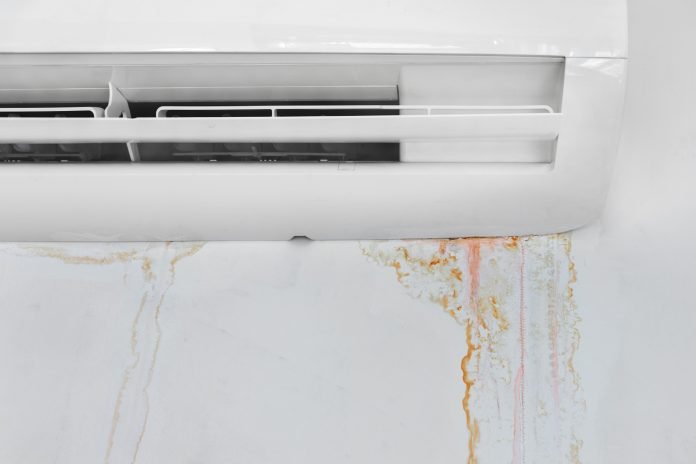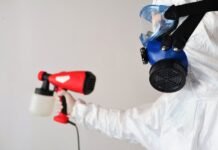Last Updated on June 14, 2023 by
An air conditioning system is an important component of your home. Regardless of your location’s climate, your temperature remains consistent. It’s why around 100 million American homes have HVAC systems.
Despite the system’s durability, it could sometimes break down. A sign of an impending problem is when the AC unit leaks. It can be an annoyance but it may also be a sign of something far worse.
What do you do when you have a leaking AC unit?
In this guide, we’ll look into some air conditioner solutions. Read on and bring your HVAC system back to its peak condition now.
Table of Contents
1. Check and Clean the Air Filter
Some problems you encounter with a broken AC unit may involve a clogged or dirty air filter. Cleaning this component can fix problems leading to water leaking from AC.
Clogged air filters can lead to a wide range of problems for your AC. It compromises your indoor air quality. To keep this from happening, remember to clean and change your air filter every 60 to 90 days.
2. Check your Refrigerant Levels
A leaking AC unit might be due to low refrigerant levels. It often makes your AC unit too cold. Often, the problem affects the evaporator coil, where it starts to freeze over.
When your AC unit leaks, the likely source for the water is the melting ice on the evaporator coil. When the problem becomes severe enough, it will overwhelm the drain pan.
When it happens, track the refrigerant levels in your air conditioning system. The other symptom of the problem is when your AC stops cooling your home. Consider calling for an HVAC professional since they can restore your AC’s refrigerant levels.
3. Cleaning the Condensate Drain Line
The causes for a clogged condensate drain line include dirt, mold, or debris. When these accumulate, it prevents the water from getting through the pipe.
It results in the water flowing backward. The best solution is to get some people to clean up the drain line. You can also attempt the cleaning effort yourself.
In case you choose the DIY approach, look for a PVC pipe near your drain pan. It’s easy to locate because it sticks out at a 90-degree angle.
Look for a little cap and unscrew it. Pour vinegar to kill off algae or fungi in the line. It’s especially effective with six ounces.
If it remains clogged, consider using a wet-dry vacuum to clean it up.
4. Cleaning or Replacing the Drain Pan
You find this component underneath your indoor air handler, housing your evaporator coil. It’s what catches any condensation from your AC unit. While the AC unit is inactive, inspect the pipe and the drain pan for any leaks.
In case you have an overflowing drain pain, clean it up and inspect it further. If you notice any cracks or other forms of damage, you have two options.
One option is to use a water sealant. It’s a temporary fix, but it would bring the leaking AC unit problem back to your attention.
The best course of action is to replace the damaged drain pan. You can replace the auxiliary drain pans. As for the primary drain pan, it requires the help of a professional.
5. Check the Condensation Pump
You’ll find this device below the cooling coil. It helps drain the water out to prevent leakage. When it breaks or malfunctions, it results in a water leak.
The accumulation of dust and dirt on the condensation pump often causes the component to malfunction. Make sure to check for any potential problems and damages. Make sure to clean it whenever possible.
6. Check and Clean the Evaporator Coil
One of the likeliest reasons for a leaking AC unit is a frozen evaporator coil. It’s a noticeable problem when you look outside and check the coils for ice buildup. This problem often comes up due to a wide range of other problems, such as dirty air filters or having low refrigerant.
One way to fix the problem is to turn off the HVAC system and let the ice melt. Check the evaporator coil for dirt and debris. Clean the section up right away.
7. Check the Ductwork for Obstructions
Another DIY area to check out is the air ducts. Ensure you don’t have anything blocking the air passageways for your HVAC system. It helps prevent the evaporator coils from freezing.
A regular check ensures your AC unit won’t leak. It also prevents moisture from accumulating within, resulting in mold infestations. It’s especially important when you or a family member is suffering from allergies.
8. AC Unit Reinstallation
Sometimes, water leaks happen because of improper installation. Even when you have a new or a fixed AC unit, you might have problems like air leaks or worse.
In this situation, it’s best to get the help of a technician. They can give a detailed overview of the problem. It determines whether you need to reinstall your AC unit.
9. Check the Temperature
You also need to check the outdoor and indoor temperatures. Water leaks happen when your coils freeze up. It happens when the temperature outside is too low, especially during cold winter nights.
Turn off the AC unit when it happens. Melt the ice around the coil to prevent water leaks.
10. Regular Maintenance
Regular maintenance can help prevent leaks and other forms of damage. A professional can help whenever necessary.
Before calling for help, remember to clean the unit as many times as possible. It ensures you’ll save more on future AC unit repairs.
Address the Leaking AC Unit Problem Today
A leaking AC unit is a sign of various problems with your HVAC system. Check what caused the leak and see whether it’s time to get reputable professionals on the job. It’s an especially important move when you’re unsure.
Did you find this guide helpful? Check out our other articles and expand your knowledge on more home improvement topics.
Apart from that, if you are interested to know about 6 Common AC Problems then visit our Home Improvement category.























